CCA alumni shape the future of sustainable design
Building upon the sustainable practices they learned at CCA, four Industrial Design alumni make contributions to sustainable products, materials, and systems in a global industry typically known for the waste it creates
As CCA’s new chair of Industrial Design Shujan Bertrand works to embed sustainable practices and circular design principles within every level of the program, we learn how four Industrial Design alumni are advancing sustainable mindsets and materials in agriculture, solar power, ceramics and footwear.
Moving from design studio to regenerative agriculture
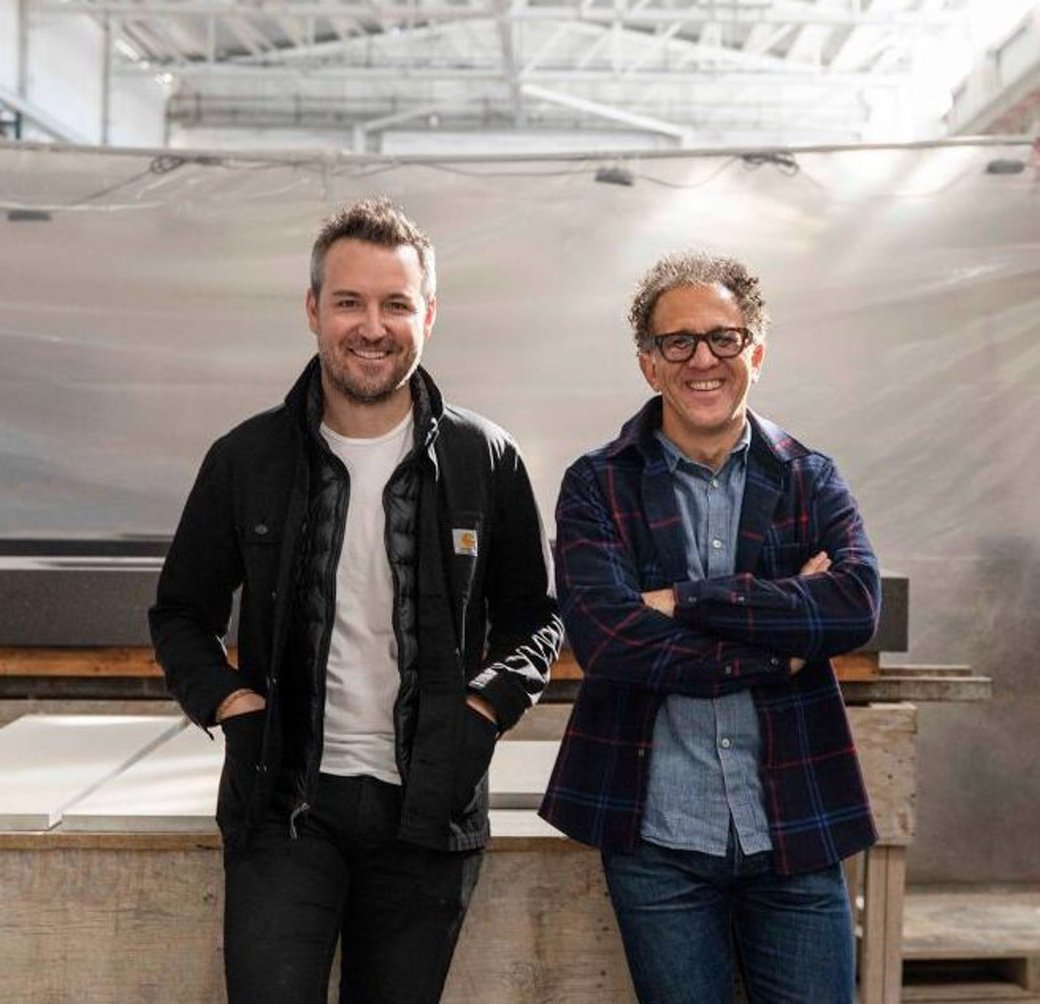
Nick Cronan with Josh Morenstein, of San Francisco–based Branch Creative which they founded in 2013 to get back into the fun of designing at every stage of product development. Courtesy Nick Cronan.
Nick Cronan (BFA Industrial Design 2002) first came to CCA in 1999 as a laborer hired to frame walls and jackhammer holes in the Greyhound bus repair facility that was to become the heart of CCA in San Francisco. He had been encouraged to get some real-world building experience before entering CCA’s architecture program in the fall, but he quickly shifted his focus to industrial design where, according to his recollections, they “seemed to have more fun and listened to better music.” In industrial design, Cronan was exposed to sustainable mindsets and practices from legendary faculty Jay Baldwin in his Energetics and Ecology course, a foundation for industrial design students at the time. Cronan recalls Baldwin’s “serene wisdom and expertise in ecology, biomimicry, natural systems and natural capitalism,” all of which made a deep impact on the young designer.
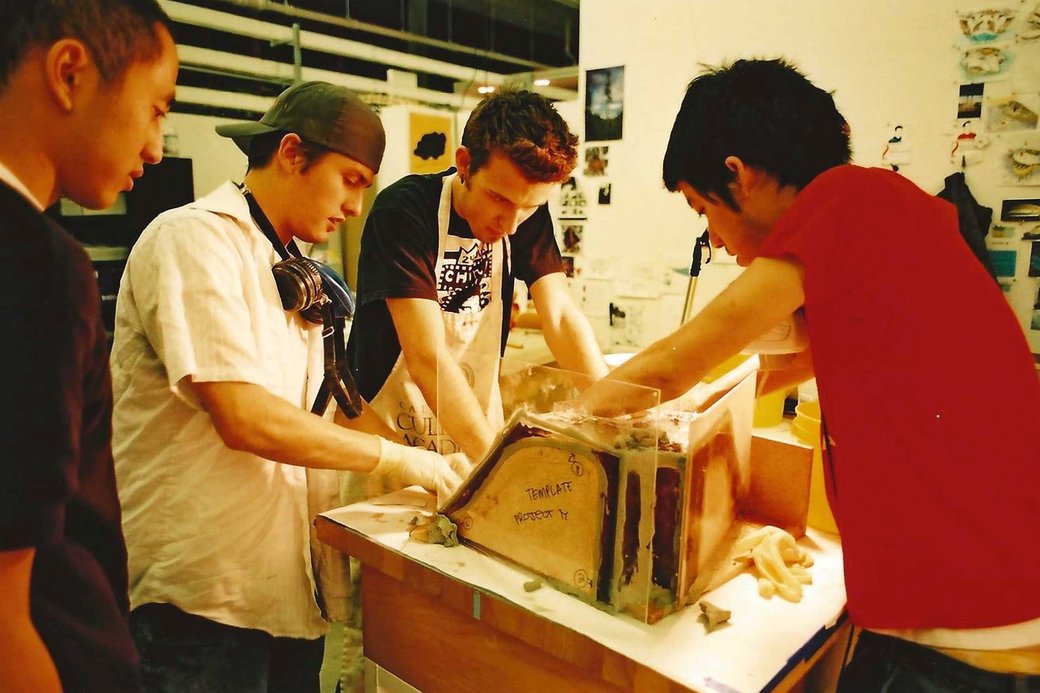
Nick Cronan and studio mates working together to prototype his senior project, Project Pie. Courtesy of Nick Cronan.
Cronan’s first post-graduation venture was LIFT, a collective of CCA Industrial Design alums that kept pushing fresh design concepts outside of their more serious day jobs. His professional life includes work with globally recognized companies like The North Face where he was one of their first footwear designers, and fuseproject where he contributed to lauded products such as the solar-powered One Laptop Per Child, Puma’s Clever Little Bag, and Mission Motors Electric Motorcycle. All were informed by a determination to utilize renewable energies, sustainable materials, and ethical production processes in products that were still expected to be visually appealing and highly marketable. In 2013, Cronan and fuseproject colleague Josh Morenstein founded Branch Creative, an intentionally small and nimble studio where they could have fun sketching, modeling, and prototyping, being hands on at every step of product development.
Making a product environmentally conscious is just as important as making it look good or function well.”
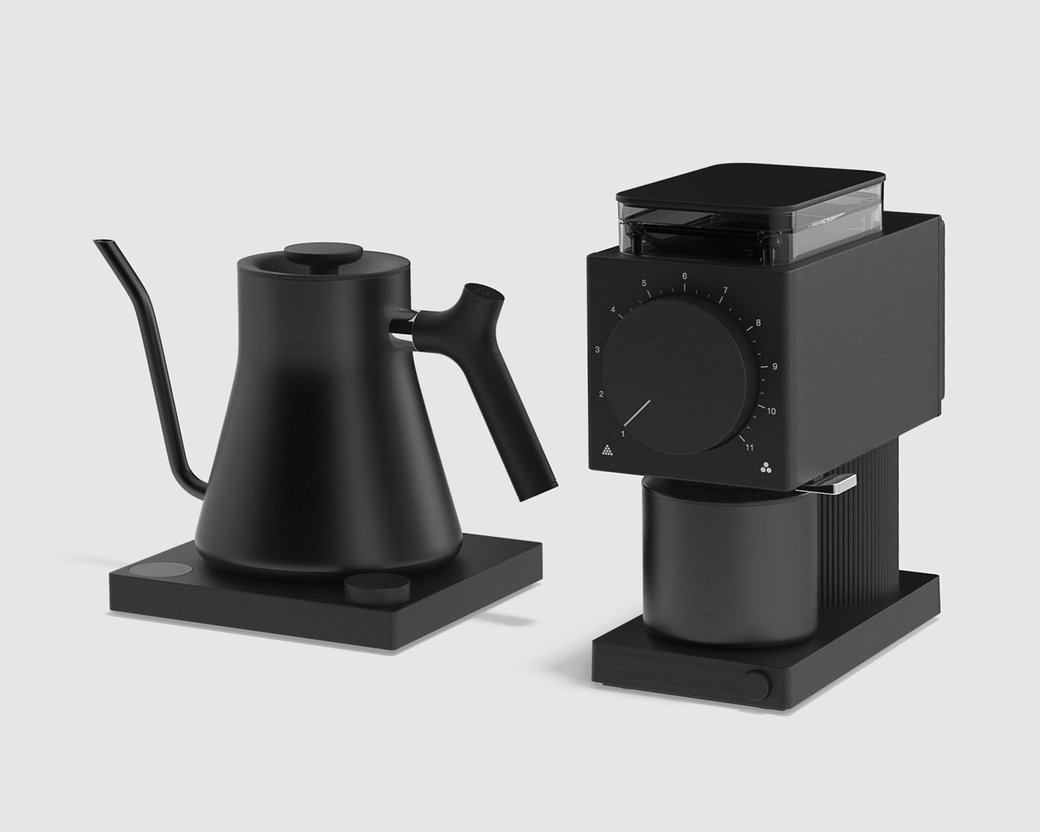
Branch Creative designed the award winning Stagg electric pour-over kettle and Ode coffee grinder for San Francisco–based coffee lifestyle brand Fellow. Courtesy of Nick Cronan.
Recently, Cronan stepped away from Branch to devote his time and talent to what he considers a challenge greater than any single product, to “work with nature, not against it” by advising organizations that align with his new focus: regenerative agriculture. He is taking his problem solving skills and technical knowledge from a successful career in industrial design to champion sustainable agriculture which he believes is the “key to addressing climate change.” Jay Baldwin would surely be proud.
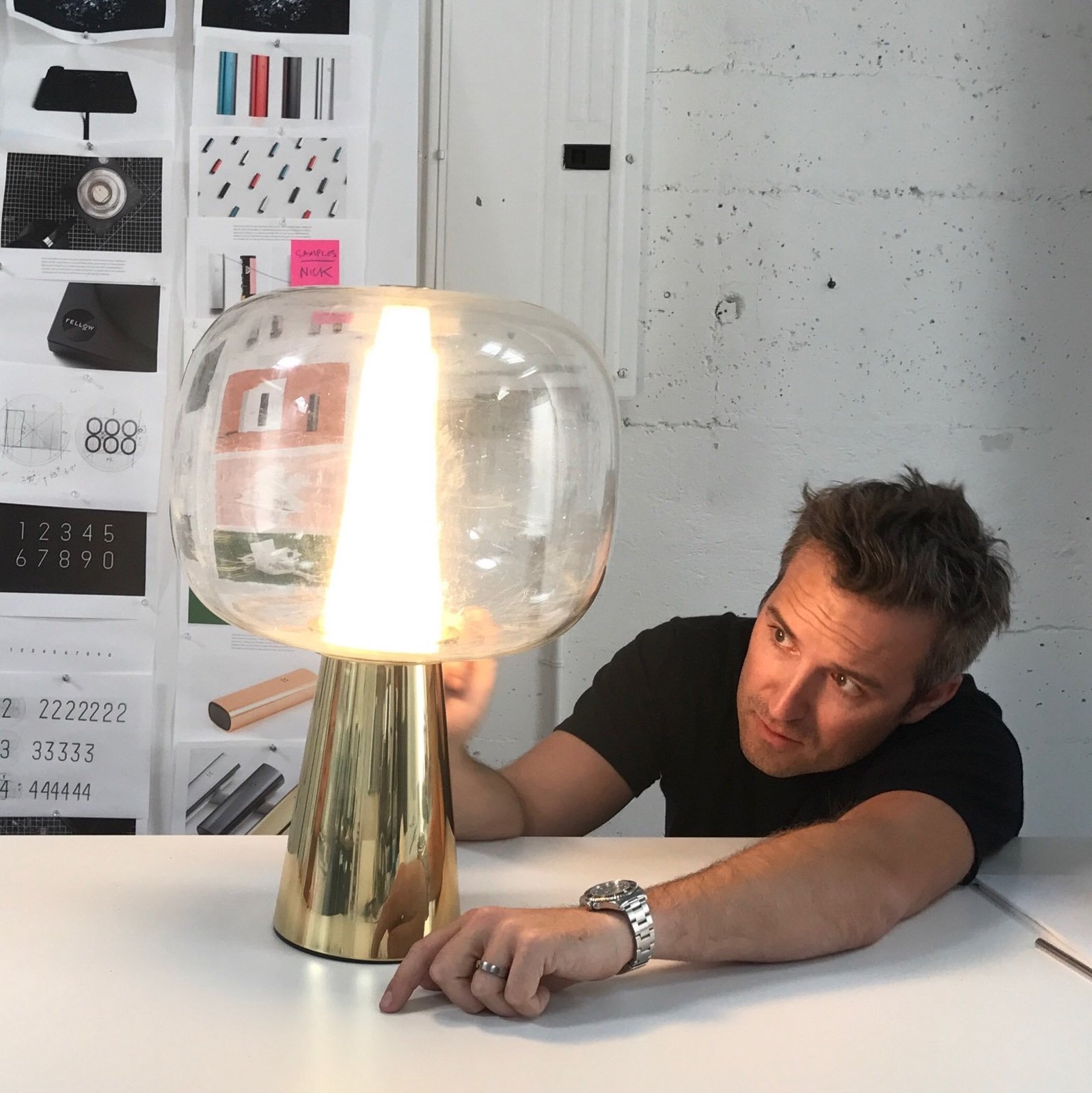
Nick Cronan
BFA Industrial Design 2002
Senior project: “Project Pie”
Work history highlights: LIFT studio, internship at One & Co., footwear designer at The North Face, industrial designer at fuseproject, design director for Beats by Dre at Ammunition, co-founder of Branch Creative.
“The relationships I built at CCA paved the way for my career, and I hope I've been able to return that opportunity to many others.”
Image: Nick Cronan with a prototype for Branch Creative’s Dusk Dawn lamp designed in collaboration with Josh Morenstein for Italian furniture company Ghidini 1961. Courtesy of Branch Creative.
Harnessing the sun while improving solar aesthetics
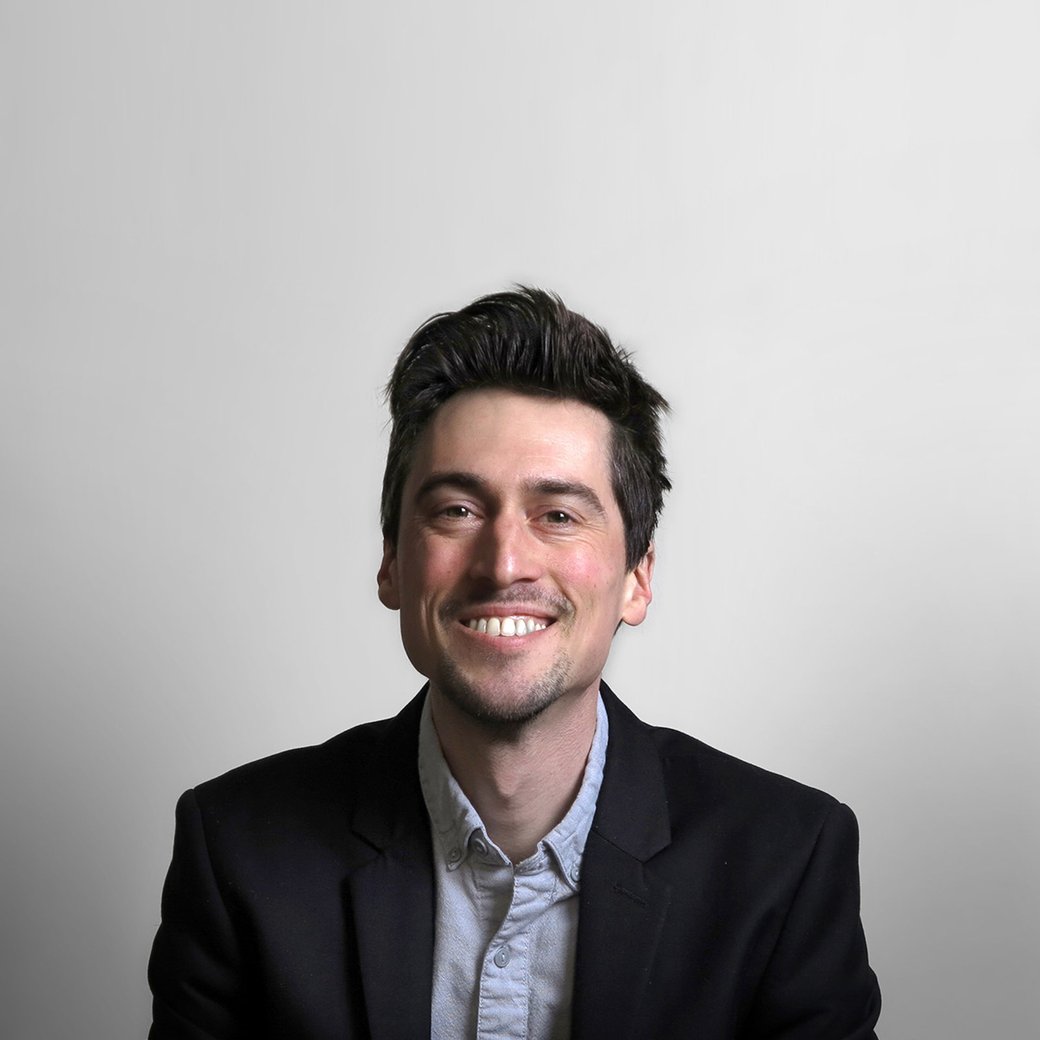
Remy Labesque, industrial designer for Tesla is leveraging the sun’s energy to develop the tools needed to bring solar-based energy to our garages and homes, day and night. Courtesy of Remy Labesque.
Remy Labesque (BFA Industrial Design 2007) grew up in rural Northern California with a deep respect for nature woven through his family life where gardening, beekeeping, and woodworking were ways to connect with and support the land. It is fitting then, that his first industrial design studio project at CCA was to design a conceptual fruit taking into account how “biology could inform the shape, size, and scale of living things,” according to the assignment brief. Labesque’s response was a florescent green loopy form that was surprisingly biological and artificial at the same time. The project confirmed that industrial design would be a good fit for this aspiring designer who wanted to invent the future while bringing nature along as a primary stakeholder.
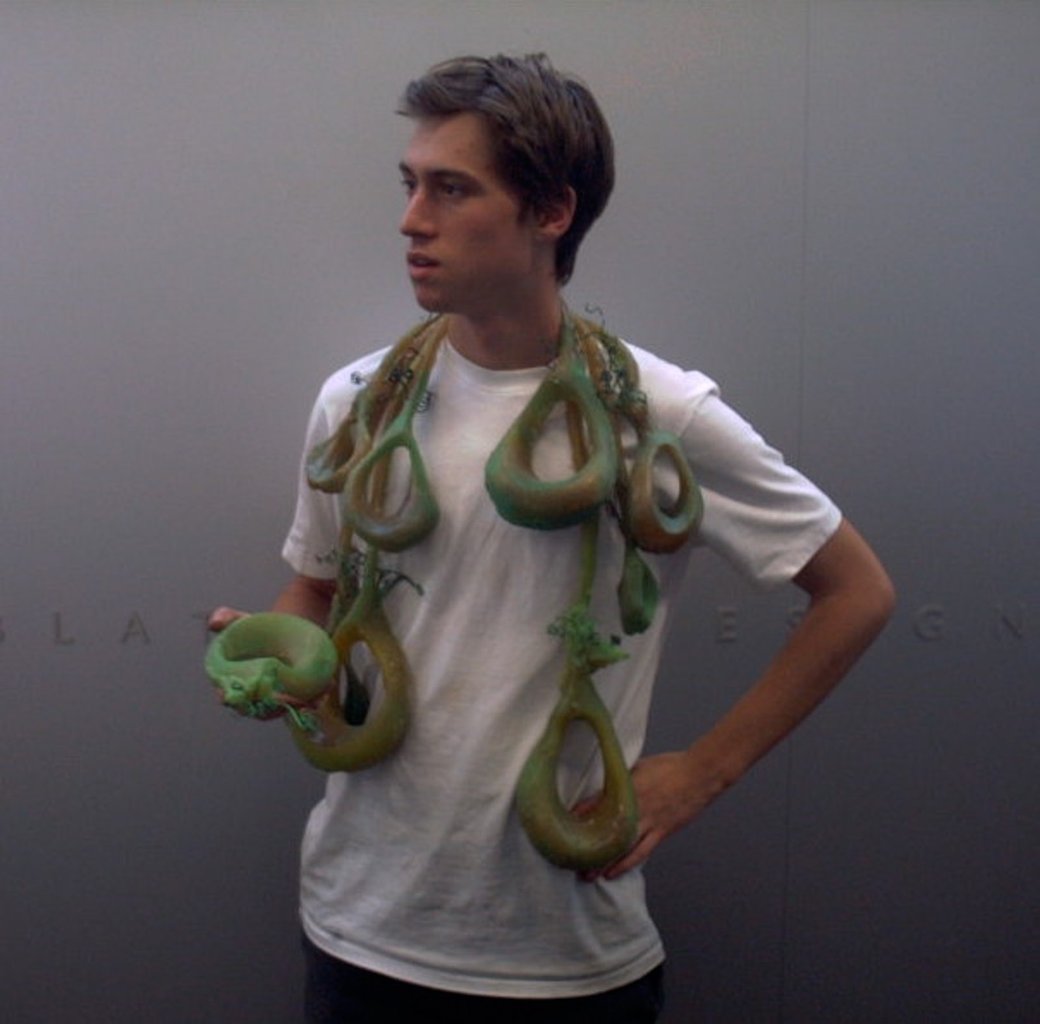
In his first Industrial Design studio at CCA, Remy Labesque modeled how his conceptual fruit “neener” could be worn as a biologically-inspired accessory until ready to eat. Courtesy of Remy Labesque.
Labesque’s first job post-graduation was with the global consultancy Frog Design where he worked on a range of technology and electronics products before moving to San Rafael–based SolarCity in 2015. There he designed solar energy products that could “leverage our incredible energy source—the sun—in a way that looks architecturally-integrated.” When SolarCity was acquired by Tesla, he stayed to design “tools to power not only cars but also homes with solar, day and night.” At each step, Labesque gained more knowledge of the engineering required to make the best use of the technologies and materials while staying true to his commitment to sustainability.
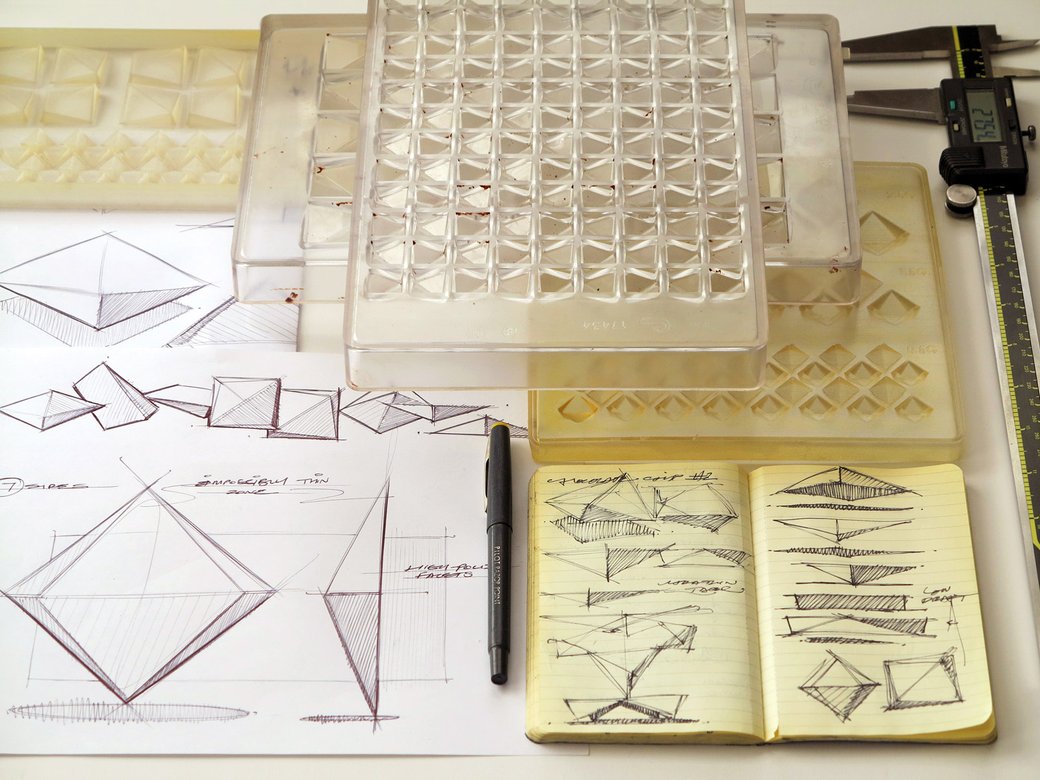
Remy Labesque’s faceted redesign of the chocolate chip for Dandelion Chocolate resulted in a greater surface area that improved the melt and the taste of the chocolate. Courtesy of Remy Labesque.
Many of the projects that Labesque has been involved in since graduating were team efforts without individual recognition, several significant enough to be awarded patents. His name is listed on a wide range of inventions—appliances, medical devices, solar units, and modular housing—all serious contributions to classic industrial design categories. But perhaps the one innovation that has garnered the most individual media attention is his chocolate chip redesign for San Francisco–based Dandelion Chocolate. After taking a chocolate making class, he identified functional flaws in existing chips that kept them from melting perfectly. His faceted flattened chocolate chip solves that problem in an elegant way and reminds us that industrial designers can be both serious and playful at the same time.
The most environmentally-responsible product is the one that never gets made. ‘Does this product earn its place’ is the question we should consider before taking the time to design most things.”
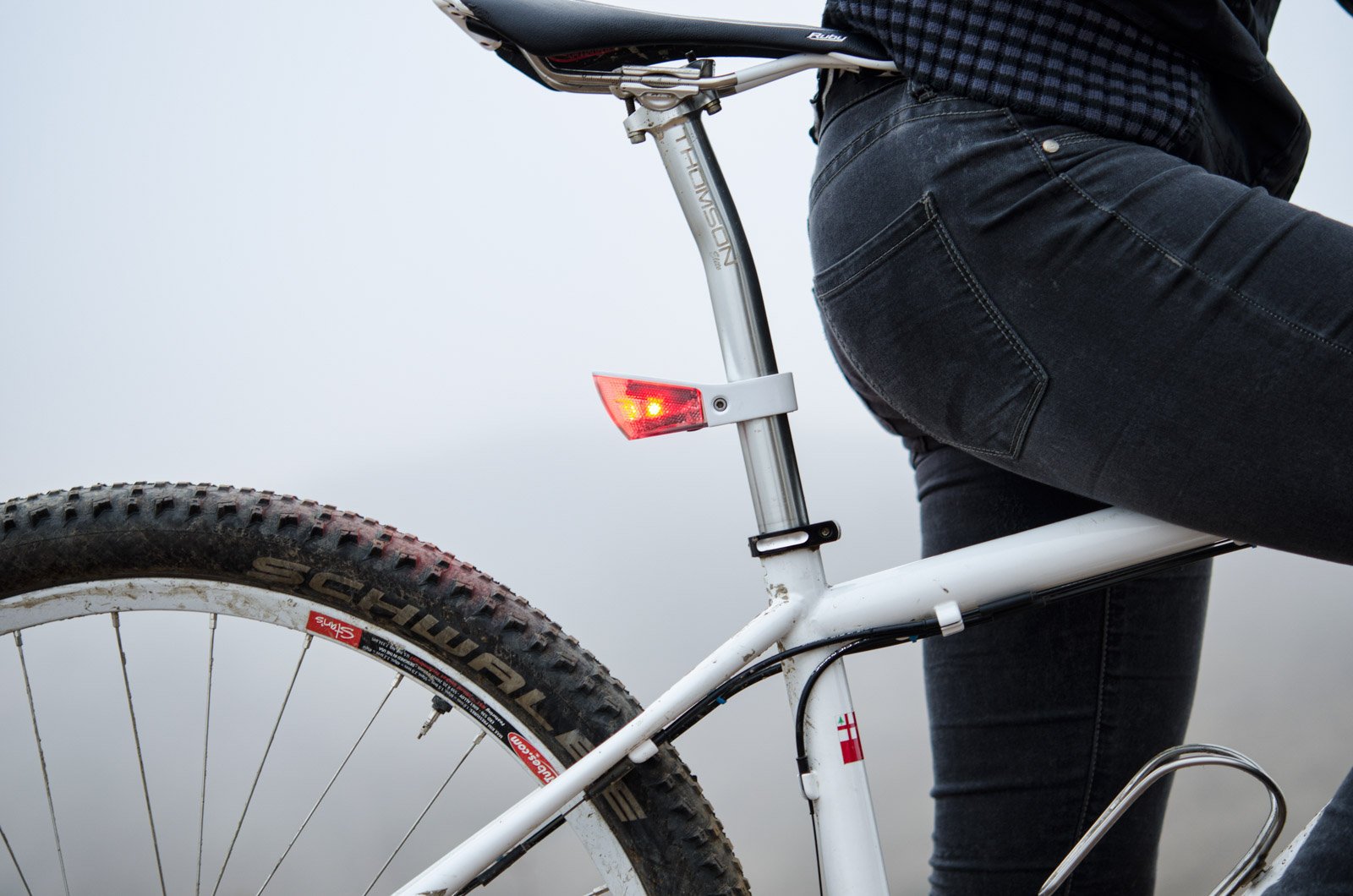
Remy Labesque
BFA Industrial Design 2006
Senior project: “Wearable Shelter”
Work history highlights: Internship at Frog Design, industrial designer at Frog Design, industrial designer at Solar City, industrial designer at Tesla.
“The biggest asset you have as a designer is the inclination to point out the shortcomings of everything around you. That is the designer mindset—to think ‘we can do this better.’ Then go do it.”
Image: After graduation, Remy Labesque worked with CCA Industrial Design faculty Colin Owen to develop the Sparse bike light, an aesthetically elegant theft-proof bicycle lighting system. Courtesy Remy Labesque.
Defining sustainable practices at a Bay Area classic
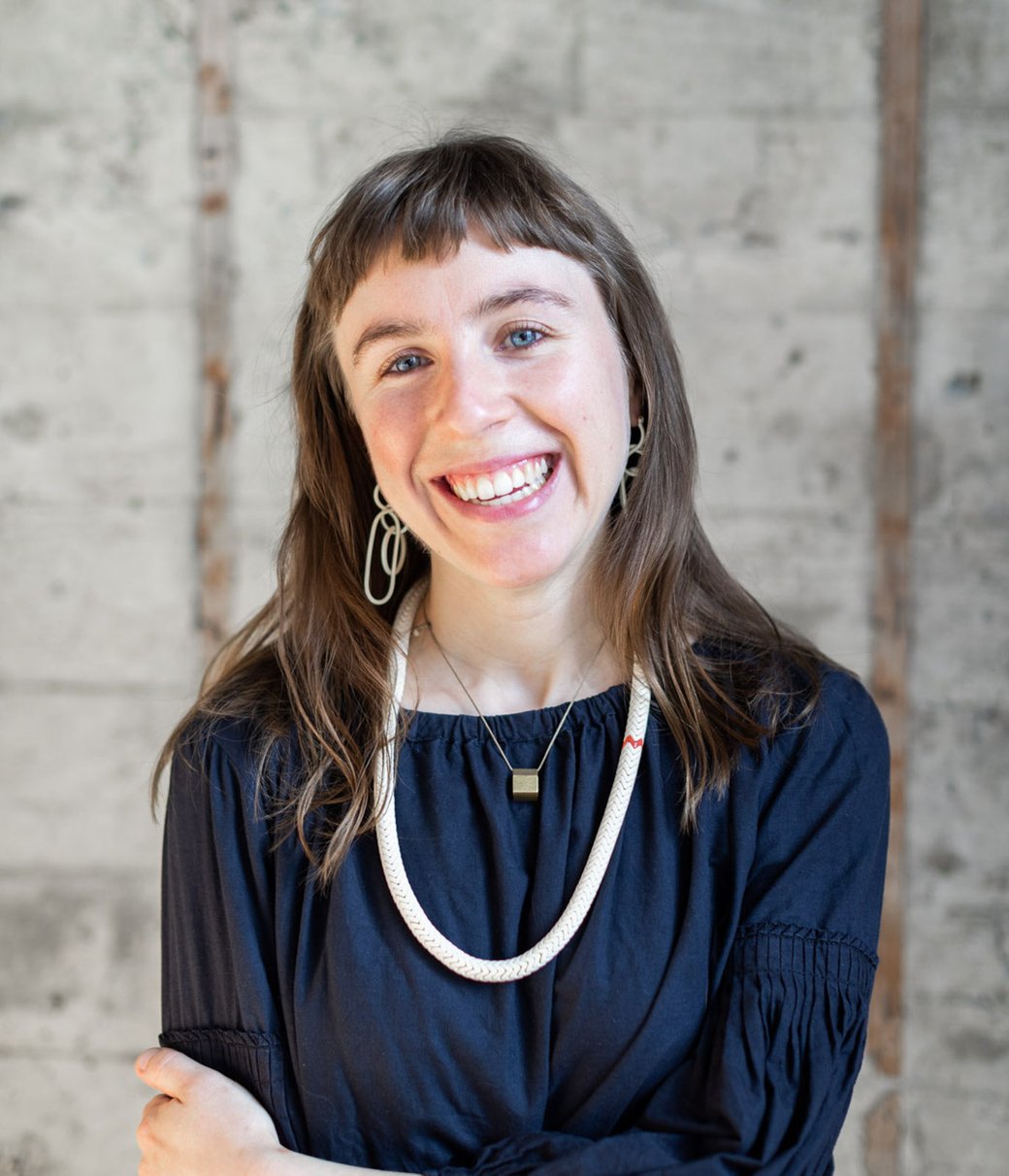
Rosalie Wild is the design director for Heath Ceramics that has been making dinnerware and tile from locally sourced California clay since it was founded in Sausalito in 1948. Courtesy of Heath Ceramics.
As a sophomore at CCA, Rosalie Wild (BFA Industrial Design 2012) did not know that she would eventually become the design director at Heath Ceramics, but she had already identified the historic Bay Area company as one of her inspirations. In a 2010 visual manifesto for her Design & Culture course, she included Heath Ceramics along with Korean artist Do Ho Suh, Dutch designer Tord Boontje, and her aunt, graphic designer Lorraine Wild as role models for her developing creative practice. Also on that manifesto? A series of statements about design that reveal an aspiring designer in charge of her future and the language to express her goals and intentions.
An excerpt from Wild’s 2010 Design & Culture visual manifesto:
“DESIGN:
Should not need a final product.
Benefits from cyclical exploration.
Enables simple, humble solutions for all.
Shapes (intangible) meaning out of (tangible) material.”
The best part of my job is working with a really diverse range of people within and outside of Heath … I love to collaborate with so many different types of talents and feel part of a larger community of people.”
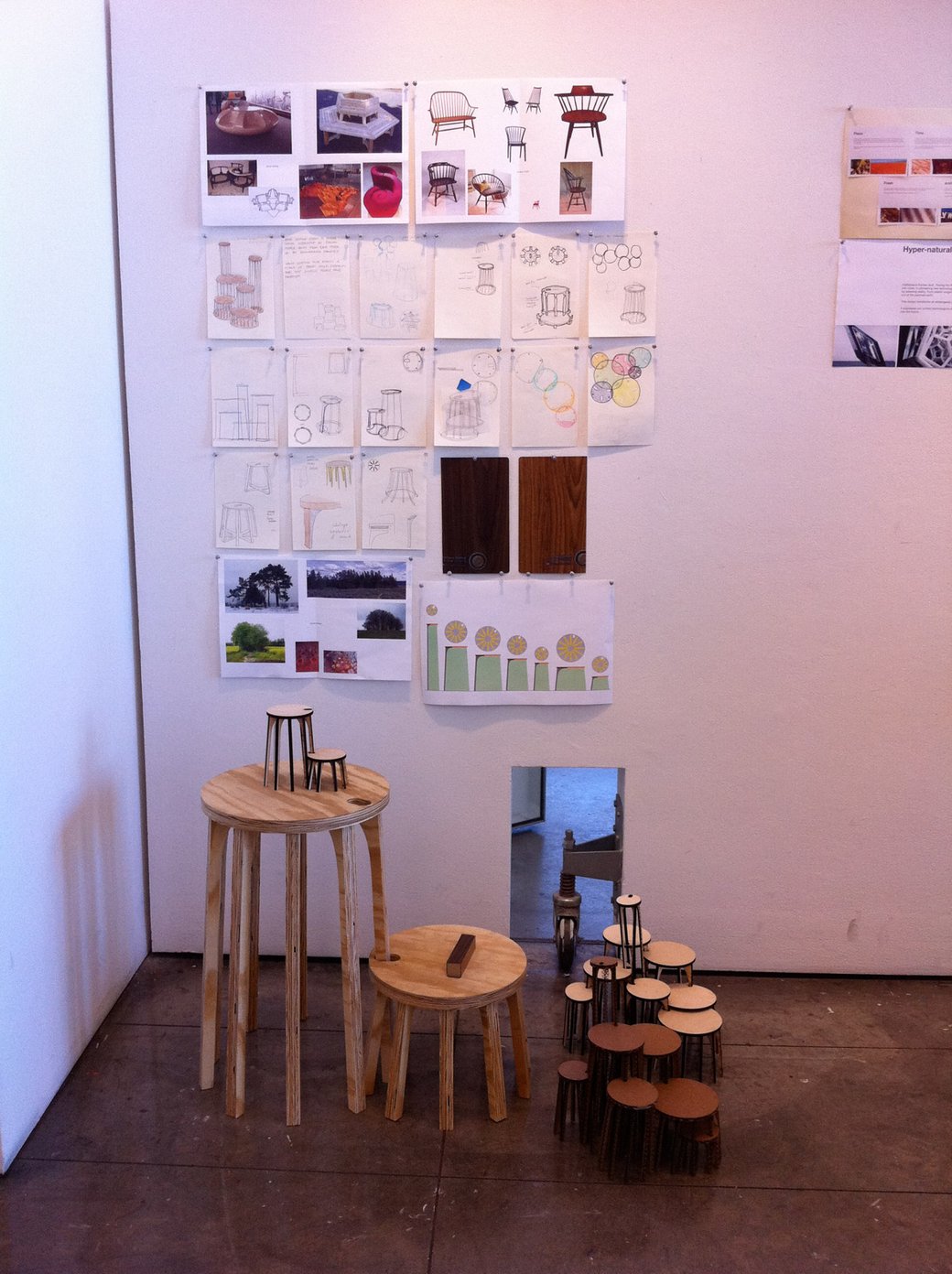
Rosalie Wild’s midterm presentation of nested table concepts for a CCA furniture studio sponsored by Wilsonart laminate company in spring 2012. Courtesy of Rosalie Wild.
Wild joined Heath Ceramics in 2013 (serendipitously an informational interview came the same moment that one of their designers was leaving) and has moved steadily from designer to senior designer, principal designer, and design director. In her current role, she oversees product design and visual communications including Heath’s semiannual seasonal collection of new glazes and forms. Not only does Heath Ceramics employ sustainable practices in their material sourcing and production processes, they also are guided by a wider definition of sustainability that includes healthy growth and support of each individual working on the team. Heath Ceramics became a certified BCorp in 2023, a step that further demonstrates their commitment to rigorous environmental and social responsibility standards and helps them redefine the metrics for success in environmental and human terms that support Wild and all of the Heath community.
Wild came to CCA not necessarily to be an industrial designer, but to study industrial design because she knew she would learn how to think and problem solve, and she especially loved materials. She was drawn to studio work in ceramics, glass, and furniture and she managed the brand new Industrial Design program blog. Wild graduated in 2012 with a wide range of material experiences to build upon and the critical writing skills to make sense of it all.
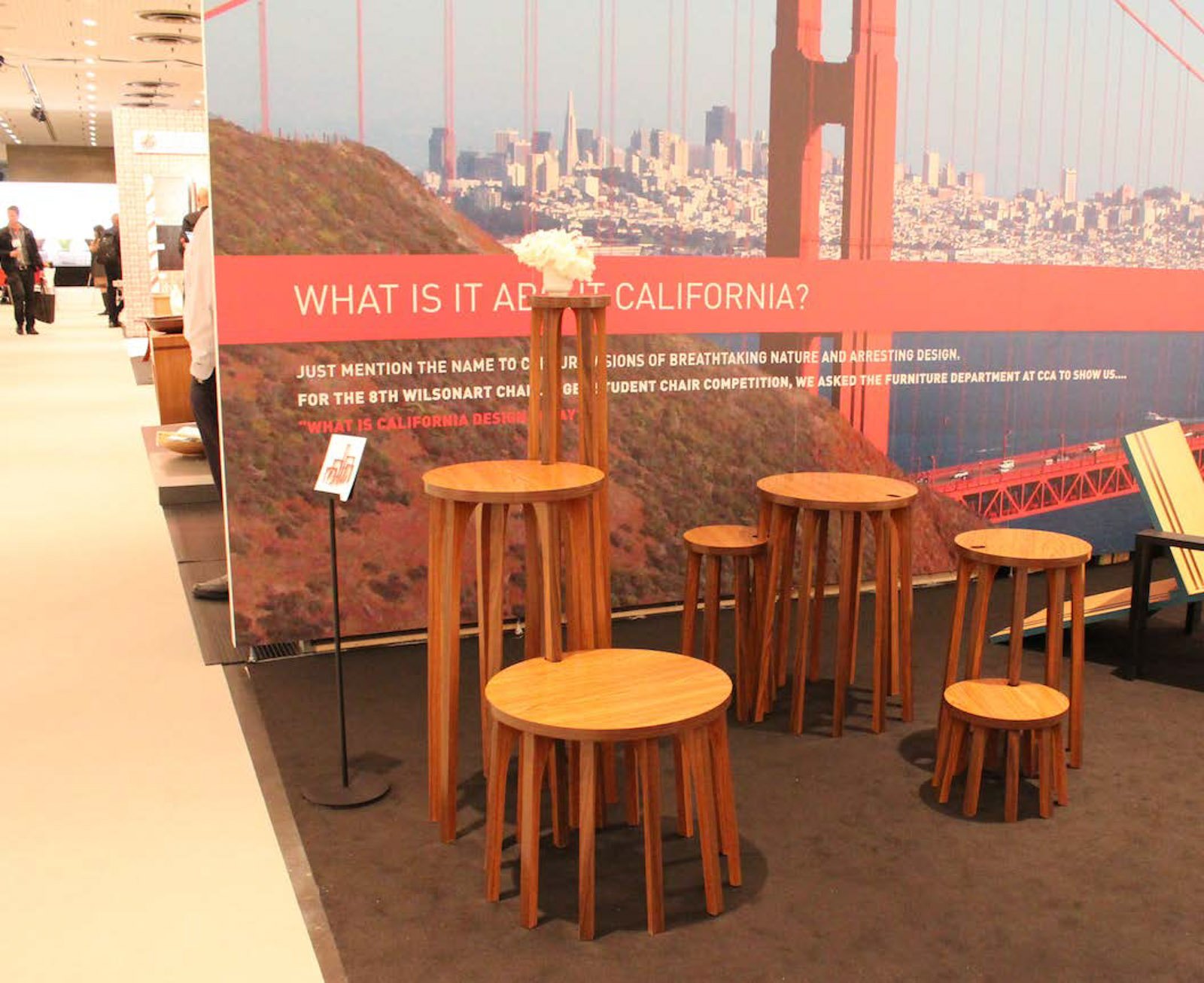
Completed table concepts for the Wilsonart sponsored furniture studio at the International Contemporary Furniture Fair (ICFF), New York City, spring 2012.

Rosalie Wild
BFA Industrial Design 2012, minor in Visual Studies
Senior project: "Spacecrafts Paper Crafts Kit"
Work history highlights: Internships at Dosa Inc., Urban Studio, Green Dragon Office; marketing producer for Workshop women’s clothing; co-curator at 18 Reasons Gallery; designer, senior designer, principal designer, and design director at Heath Ceramics.
“Practice being observant, and expose yourself to as much culture as you can. Even when you don't consciously know it, these influences will lead you to make more relevant designs.”
Image: In her final project for Eric Scollon’s Social Ceramics studio, Rosalie Wild invited visitors to “Construct a Cup” by attaching handles to each hand thrown clay cup with colorful zip ties. Courtesy of Rosalie Wild.
Exploring material sustainability in footwear and ceramics
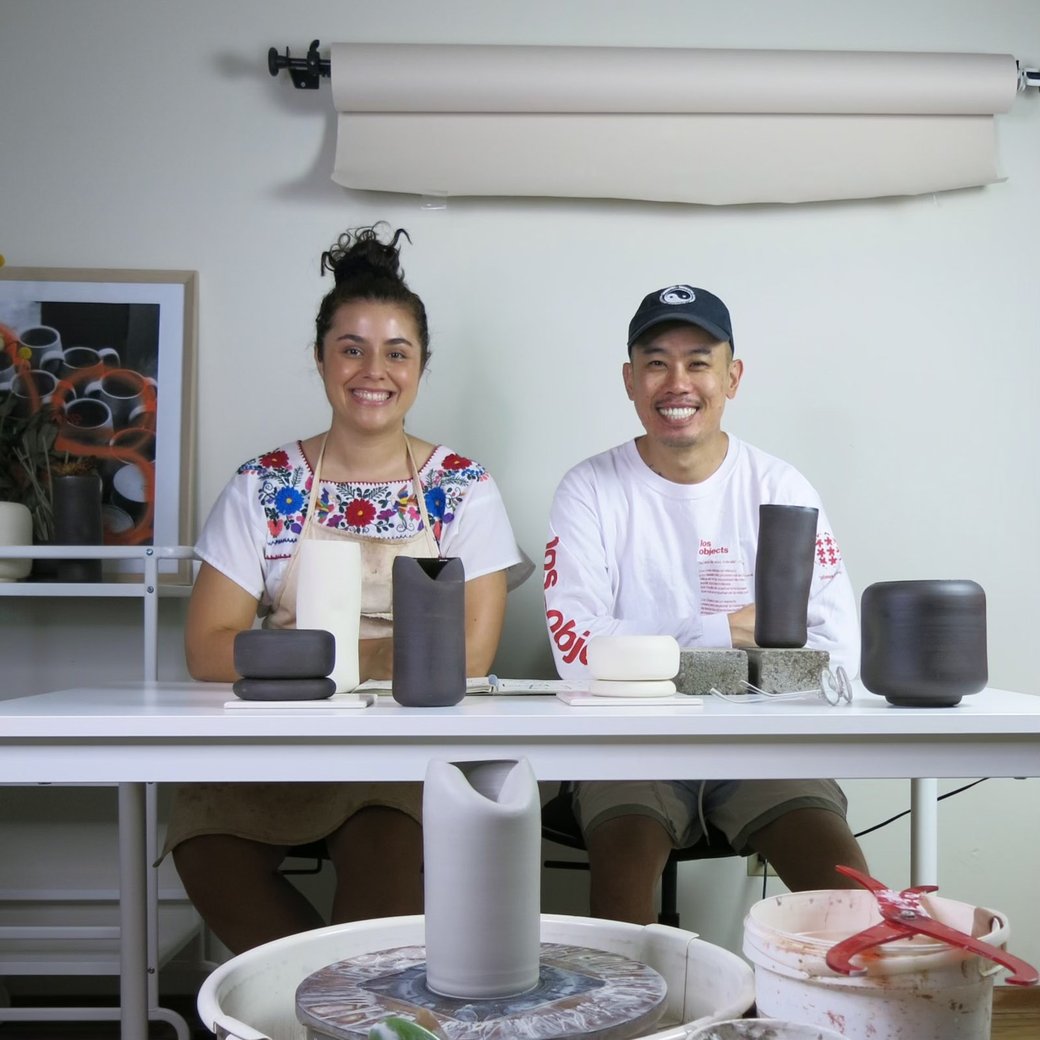
Angela Sevilla with Dustin Le (BFA Industrial Design 2017), partners in Los Objects ceramics studio (and in life), with a selection of the vases and planters that they designed during the pandemic. Courtesy of Angela Sevilla.
Angela Sevilla (BFA Industrial Design 2017) thought she wanted to go to culinary school until the moment she poured molten aluminum into a mold at a college recruiting event in her hometown of Culiacan, Sinaloa, Mexico. That sparked an interest in other materials— ceramics, glass, jewelry—which she first studied in community college, then later at CCA. Industrial Design seemed the perfect major to merge her passion for food with her love of making things. In a junior industrial design studio, she and her classmates designed ecologically and culturally sensitive products using sustainable mindsets and methods, though at the time she recalls that it was difficult to fully understand what sustainability meant in real world terms.
Sevilla’s first job was with Fitbit as a CMF (Color/Material/Finish) designer, an emerging field at the time. There she realized that every design decision had an environmental cost and that sometimes the most sustainable option was to test silicone colors at the factory rather than ship samples across the ocean multiple times. Since then, Sevilla has seen many improvements in materials—vegan leather, seaweed plastics, water-free dyeing processes—but admits that many decisions still come down to cost. In her current role as a color and materials designer at Nike, she uses sustainable practices every day—gauging material durability, component separation, and especially weight—factors that impact the sustainability rating of every pair of sneakers delivered.
Los Objects has taught me that I don’t need to be attached to my job. I can apply my thinking to so many things. I have learned to bring something to life—from idea to reality.”
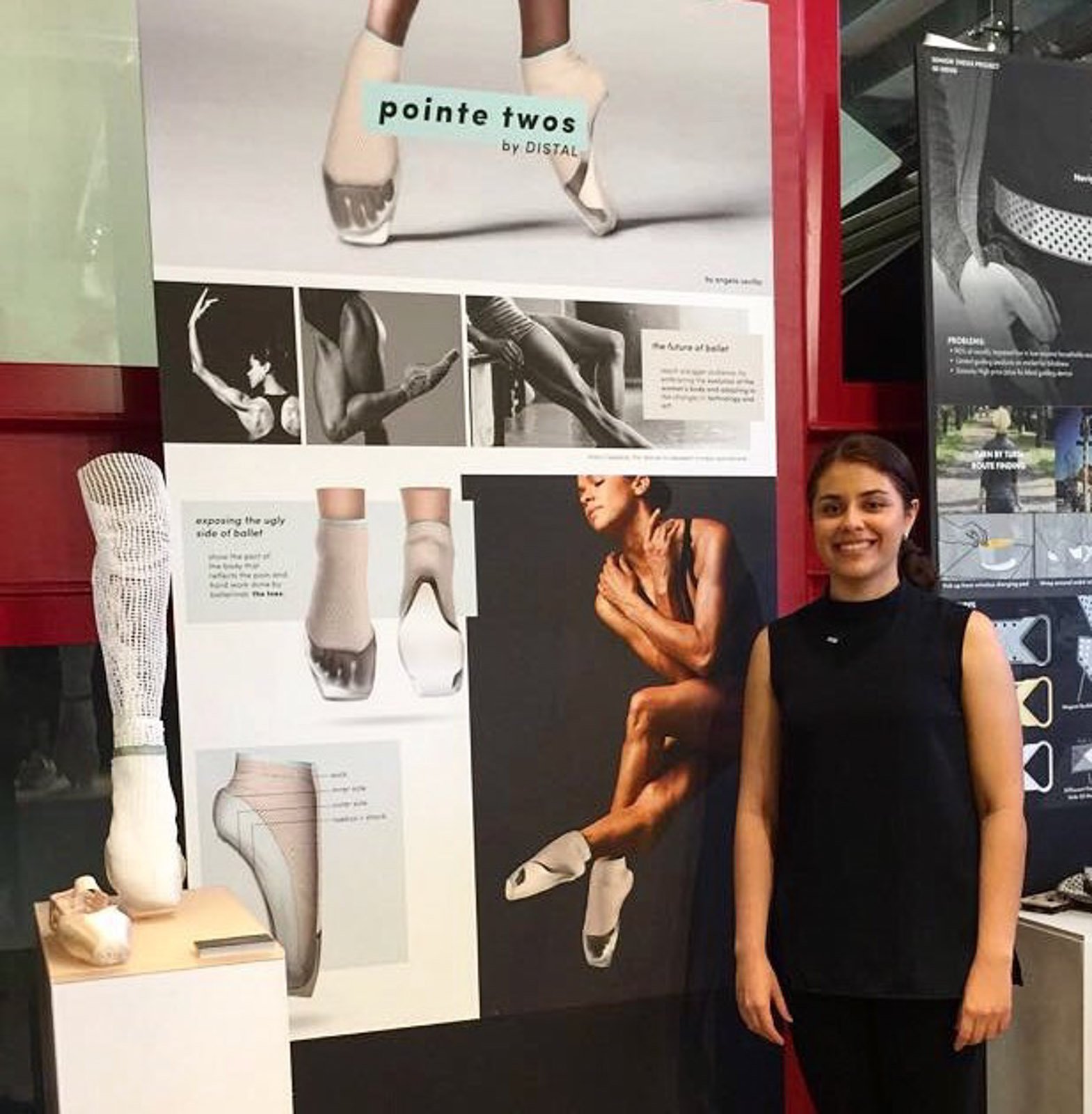
Angela Sevilla with her Pointe Twos ballet slippers senior thesis project that merged her interest in specialized footwear with her personal experience through years of ballet training. Courtesy of Angela Sevilla.
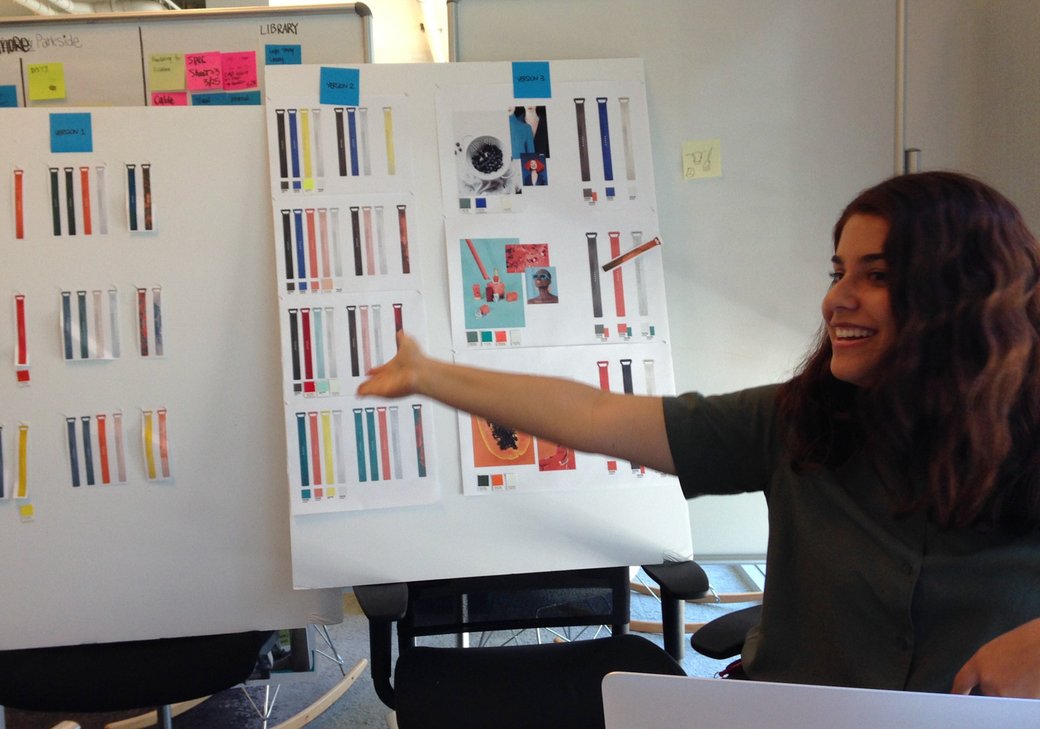
Angela Sevilla presents product color concepts during her internship with San Francisco–based wearable health-and-wellness tracking company Fitbit. Courtesy of Angela Sevilla.
Before joining Nike, Sevilla had taken a three-month sabbatical to focus on ceramics and get back into wheel throwing, but that sabbatical was extended when her interviews with Nike stalled at the outset of the pandemic. She and partner Dustin Le (BFA Industrial Design 2017) turned their Portland garage into a pottery studio and Los Objects was born. Three hundred sixty-six cups later (one for each day of 2020, a leap year) they had enough for an exhibition, each cup a poignant record of Sevilla’s energy and emotion throughout the pandemic year. Today the vessels and cups she makes for Los Objects are satisfying and tangible reminders of the materiality that first drew her to industrial design.

Angela Sevilla
BFA Industrial Design 2017
Senior project: “Pointe Twos” ballet slippers
Work history highlights: Fitbit, Lunar Design, co-founder of Los Objects, Nike Express Lane color and materials designer.
“The field you will work in might not exist at the moment that you graduate, so stay open for alternative ways to use what you have learned.”
Image: Nike Pegasus 40 and Air Max 1 sneakers from the Famillia collection, designed for young Latinas by Angela Sevilla and team members Daniela Triana Mayorga, Nico Rodriguez, Rachel Denti, and Juan Huerta. Courtesy of Angela Sevilla.
—Mara Holt Skov, associate professor of Industrial Design
April 25, 2024
Hero image: Remy Labesque, Adam Reineck, Nathan Whipple, and Steven Skov Holt, Bio-inspired concept watch, 2004. Courtesy of Steven Skov Holt archives.